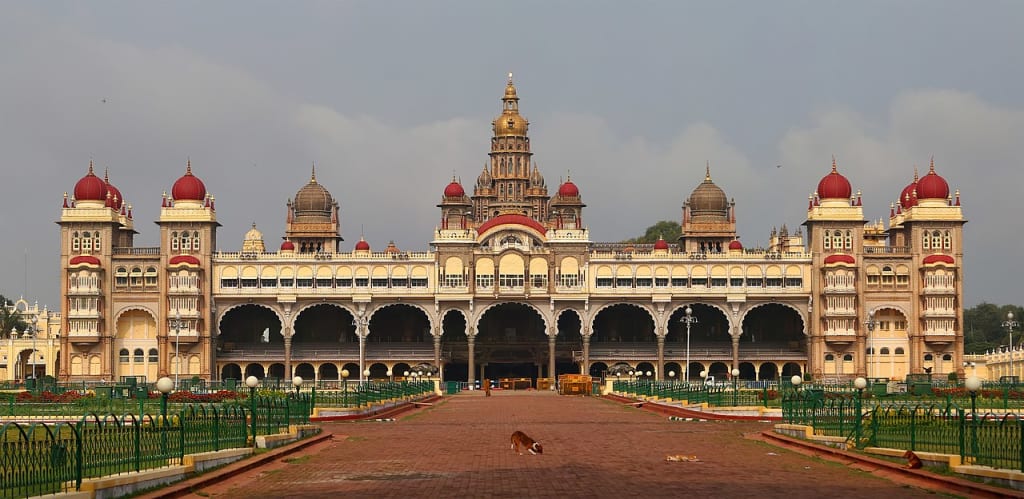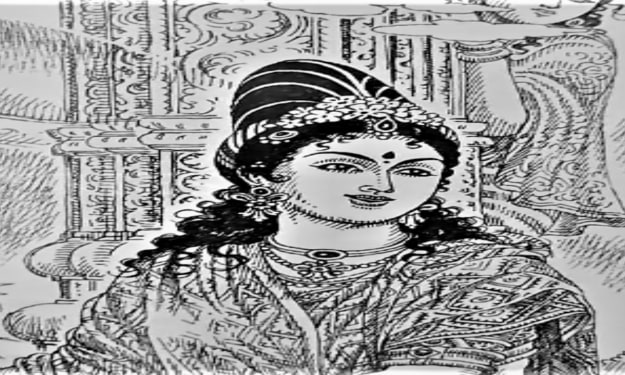"Royal Splendor: Mysore Palace - A Tapestry of Majestic Magnificence"
"Timeless Elegance: Exploring the Enchanting Marvels of Mysore Palace"

Mysore Castle, otherwise called Amba Vilas Royal residence, is a verifiable royal residence and an illustrious home (house). It is situated in Mysore, Karnataka. It used to be the authority home of the Wadiyar administration and the seat of the Realm of Mysore. The castle is in the focal point of Mysore, and appearances the Chamundi Slopes toward the east. Mysore is generally portrayed as the 'City of Castles', and there are seven royal residences including this one. Nonetheless, the Mysore Castle alludes explicitly to the one inside the new stronghold.
The land on which the royal residence currently stands was initially known as mysuru (in a real sense, "bastion"). Yaduraya assembled the principal castle inside the Old Post in the fourteenth 100 years, which was set on fire and remade on different occasions. The Old Stronghold was worked of wood and in this way handily burst into flames, while the ongoing post was worked of stone, blocks, and wood. The ongoing design was built somewhere in the range of 1897 and 1912 after the Old Castle burned to the ground, the ongoing construction is otherwise called the New Stronghold. Mysore Royal Residence is one of the most well-known vacation destinations in India, after the Taj Mahal, with in excess of 6,000,000 yearly visitors.[1]
The construction of Mysore Palace dates back to the 14th century, with subsequent renovations and expansions over the centuries. The palace we see today is the fourth and final version, built in the early 20th century under the reign of Maharaja Krishnaraja Wadiyar IV. It showcases a splendid blend of various architectural styles, primarily the Indo-Saracenic style with influences from Hindu, Muslim, Rajput, and Gothic elements.
The palace is a sight to behold with its magnificent structure, adorned with intricate carvings, vibrant frescoes, and ornate detailing. It features a three-storied facade, characterized by a profusion of arches, domes, and turrets. The palace is constructed using gray granite stones, giving it a sturdy and regal appearance.
The interior of Mysore Palace is equally breathtaking. The Durbar Hall, or the Audience Hall, is one of the most opulent sections of the palace. It boasts an expansive hall with an intricately painted ceiling, sparkling chandeliers, and an ornate golden throne, where the royal ceremonies and functions were once held. The palace also houses a vast collection of artifacts, including royal costumes, weapons, paintings, and jewelry, providing a glimpse into the rich history of the Wadiyar dynasty.
One of the main attractions of Mysore Palace is the Illumination, a grand spectacle where the entire palace is illuminated with thousands of dazzling lights, creating a mesmerizing display during special occasions and festivals, especially during the Dasara festival.
Surrounded by well-manicured gardens and lush landscapes, Mysore Palace stands as an epitome of architectural brilliance and regal splendor. It stands as a proud symbol of Mysore's cultural heritage, reflecting the grandeur and glory of its royal past.
Mysore Palace does not have any specific secret behind it, but it has a rich history and several interesting aspects associated with it. Here are a few noteworthy points:
Historical Significance: The original palace was built in the 14th century but was destroyed and rebuilt multiple times due to natural disasters and conflicts. The current structure we see today was completed in 1912.
Architecture: The palace showcases a unique blend of architectural styles, primarily the Indo-Saracenic style. It incorporates elements from Hindu, Muslim, Rajput, and Gothic architectural styles, making it a remarkable fusion of diverse influences.
Cultural Heritage: Mysore Palace stands as a symbol of the cultural heritage of the Wadiyar dynasty, who ruled the Kingdom of Mysore for several centuries. It serves as a reminder of their reign and contribution to the region.
Royal Residence: The palace served as the official residence of the Wadiyar dynasty and was the center of royal administration and governance. It witnessed numerous royal ceremonies, celebrations, and events.
Preservation and Restoration: The palace has undergone extensive restoration work to maintain its architectural integrity and preserve its historical value. The Government of Karnataka, along with various cultural and heritage organizations, has played a significant role in ensuring the palace's upkeep.
Illumination: The palace is famous for its grand illumination during special occasions and festivals, most notably during the Dasara festival. Thousands of lights are meticulously placed throughout the palace, creating a stunning visual display that attracts visitors from far and wide.
While Mysore Palace may not have hidden secrets in the traditional sense, its allure lies in its captivating history, architectural brilliance, and its ability to transport visitors to a bygone era of royal extravagance.
About the Creator
Anitha
I’m a writer, "The Importance of Mindfulness in a Busy World" Currently trying to write a book. Writing about anything and everything
Enjoyed the story? Support the Creator.
Subscribe for free to receive all their stories in your feed. You could also pledge your support or give them a one-off tip, letting them know you appreciate their work.






Comments
There are no comments for this story
Be the first to respond and start the conversation.